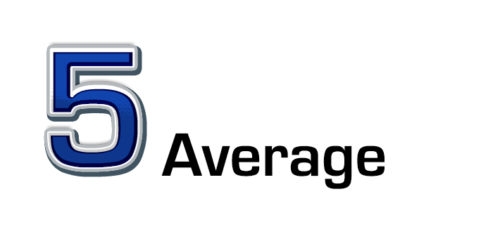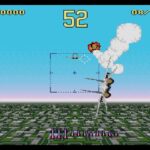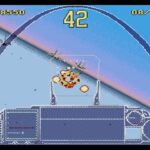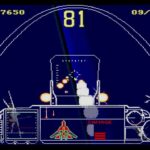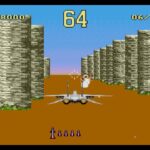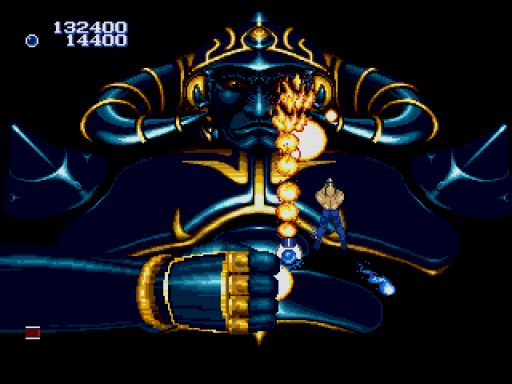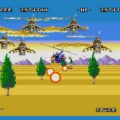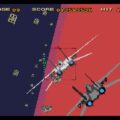Developer: Probe Publisher: Sega Released: 1992 Genre: Action
G-Loc was one of Sega’s most interesting arcade units. The R-360 cabinet would rotate in every direction and even do a full 360 to simulate the onscreen action. It is clear this was the way it was meant to be played but sadly I never had the chance. The few times I saw it in Aladdin’s Castle my mom was firmly against it, which, with my luck was probably wise. Porting this experience to the Genesis was always going to be a hefty task but even with that in mind G-Loc is still disappointing.
The best way to describe G-Loc is a mission based version of After Burner. In every level you are charged with shooting down a specific number of targets. In true arcade fashion each section has a strict time limit with whatever remaining time added to the clock for the next segment. Each level can have as many as ten missions with each mission requiring a varying number of targets. Once complete you must land on the aircraft carrier in a sequence similar to Top Gun on NES. Thankfully it is nowhere near as frustrating. You do not have lives; you can die as much as you want with the only penalty being time. But for an arcade experience like this it is a far harsher punishment.
The Genesis version introduces a number of changes, some for that make the game worse and others that are superfluous. In the arcade G-Loc was primarily first person and only switched to the third whenever an enemy had target lock to give you the chance to avoid a missile. Here the game switches between both views multiple times in each stage. The third person camera is not very good as you can only move slightly within a small space which makes targeting with your cannons harder than it should be. The targeting reticle is slow in both perspectives which make clearing each mission frustrating rather than exciting. To compensate enemies are less aggressive which makes the game easier.
One addition that I question is the addition of a shop. Between missions you can use the points earned as cash to buy various upgrades on the new mission map. You can purchase different flavors of armor, more powerful bullets and different varieties of missiles. The addition of limited missile stock is completely unnecessary and adds nothing to the game. To be fair even after a single mission you will have an abundance of cash to buy items as necessary. You can max out everything after two missions which is why I feel it is a superfluous addition. Put a gun to my head and I still could not tell you the difference between the various missiles; they all functioned identically to my eyes. This could have added another dimension to the gameplay but instead might as well not exist.
Perhaps what makes this version of G-Loc so bad is that it is tedious. The overall pace feels more like a cruise ship than a fighter jet flying at subsonic speeds. The chase camera segments that pit you against ground targets could have been exciting as you dart through tight canyons and such. Instead you barely need to move as the scaling is so bad compared to the arcade. The enemy pattern rarely changes from one mission to the next and as the stages get longer this fact becomes more apparent. Sega made each stage longer and added one more to make this a well-rounded package. Instead it highlights why this was an arcade “experience” to begin with.
Sega and developer Probe were never going to be able to fully bring the arcade experience home visually. With that in mind it does capture most of the look. The texture mapped graphics of the arcade are now rolling plains. Some backdrops look better than others; the city maps look fantastic while the open seas and the sky are plain and boring. Sadly the scrolling canyon missions look awful; just like with Galaxy Force 2 the scrolling is choppy and just plain bad. At least the soundtrack is pretty good.
In Closing
Sega tried to deliver a faithful version of the arcade game but failed in many respects. The game would have been better off closely following After Burner rather than trying to replicate a deluxe arcade experience. G-Loc Air Battle shows why some experiences are best left in the arcade.
